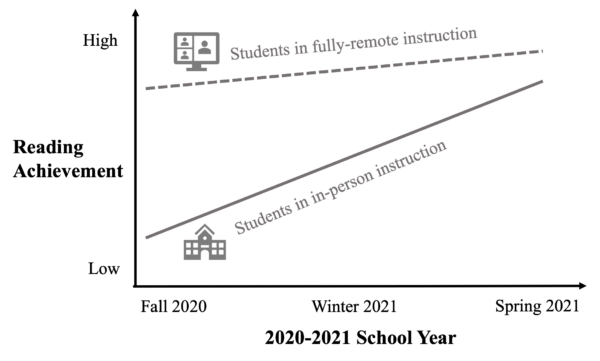COVID-19 Impact on Reading Achievement

Project Information
This project explored the COVID-19 impact on reading achievement growth by Grade 3–5 students (N = 23,601) in a urban school district in the U.S. and whether the impact differed by students’ demographic characteristics and instructional modality. We investigated to what extent students made gains in reading during the 2020–2021 school year relative to the pre-COVID-19 typical school year in 2018–2019. We further examined whether the effects of instructional modality (in-person instruction vs. fully remote instruction) on reading growth varied by demographic characteristics.
Publication
- Relyea, J. E., Rich, P., Kim, J. S., & Gilbert, J. B. (2023). The COVID-19 impact on reading achievement growth of grade 3-5 students in a U.S. urban school district: Variation across student characteristics and instructional modalities. Reading and Writing, 36, 317–346. https://doi.org/10.1007/s11145-022-10387-y
Major Findings
- Overall, students had lower average reading achievement gains over the 9-month 2020–2021 school year than the 2018–2019 school year.
- Substantially reduced reading gains were observed from Grade 3 students, students from high-poverty backgrounds, English learners, and students with disabilities.
- Higher-achieving students likely chose the fully remote instruction option, while lower-achieving students appeared to opt for in-person instruction at the beginning of the 2020–2021 school year.
- However, students who received in-person instruction most likely demonstrated positive growth continuously over the school year, whereas initially higher-achieving students who received remote instruction showed stagnation or decline in reading in the spring semester.
